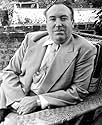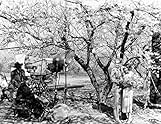Lee Garmes(1898-1978)
- Cinematographer
- Director
- Producer
One of the most innovative of pioneer cameramen, Lee Garmes started his
career on the East Coast with the New York Motion Picture Company, but
was soon persuaded by the director
Thomas H. Ince to join him in Hollywood.
Garmes quickly climbed his way up the ladder, from painter's assistant
to prop boy (future director
Henry Hathaway shared the same duties at
'Inceville'), to camera assistant. He struck up a singularly fruitful collaboration with director Malcolm St. Clair,
with whom he worked on one- and two-reel shorts. Many of these early
comedies were shot on a shoe-string budget and necessitated clever
improvisation, especially in the usage of lead-sheet reflectors
(re-directing sunlight) which substituted for proper lighting. Garmes
also introduced incandescent tungsten filament Mazda lights as a
significant cost-saving venture. In 1925, now as a fully-fledged
director of photography, Garmes went over to Paramount, first under
contract from 1925 to 1926. He perfected his craft at First National
and Warner Brothers (1927-1930), before returning to Paramount and
making a significant contribution to some of the most outstanding
black-and-white films made by the studio during the early and
mid-1930's. His most recognizable trademark was to naturally light his
sets from a northward orientation.
Said to have been influenced by the paintings of Rembrandt, Garmes showed a great flair in the use of chiaroscuro, light and shade, which enhanced the expressionistic European look of darkly exotic ventures like Coeurs brûlés (1930) and Shanghaï Express (1932). Both pictures were directed by Josef von Sternberg and starred one of Paramount's most bankable assets, Marlene Dietrich, flatteringly photographed by Garmes with subdued lighting amid swirling, misty backgrounds. "Shanghai Express" led to an Academy Award and established Garmes as one of the top cinematographers in the business. His career suffered a setback, however, when he was replaced by David O. Selznick months into shooting Autant en emporte le vent (1939) (Selznick objected to the Garmes technique of soft lighting, preferring the harsher 'picture postcard' colours). Though the first hour of GWTW was almost entirely shot by Garmes (most of it directed by George Cukor, who was also fired), he was not credited for his efforts.
Lee Garmes imbued many more seminal films of the 1940's and 50's with his own particular style, creating the romantic moods of Lydia (1941), the exotic splendour of Alexander Korda's technicolor Le Livre de la jungle (1942) and the semi-documentary realism of William Wyler's Histoire de détective (1951). He became one of few cinematographers to be given additional responsibilities in directing and production and in 1972 became one of the first advocates for the use of videotape in filmmaking. Garmes was twice recipient of the Eastman Kodak Award. He served as present of the American Society of Cinematographers from 1960 to 1961.
Said to have been influenced by the paintings of Rembrandt, Garmes showed a great flair in the use of chiaroscuro, light and shade, which enhanced the expressionistic European look of darkly exotic ventures like Coeurs brûlés (1930) and Shanghaï Express (1932). Both pictures were directed by Josef von Sternberg and starred one of Paramount's most bankable assets, Marlene Dietrich, flatteringly photographed by Garmes with subdued lighting amid swirling, misty backgrounds. "Shanghai Express" led to an Academy Award and established Garmes as one of the top cinematographers in the business. His career suffered a setback, however, when he was replaced by David O. Selznick months into shooting Autant en emporte le vent (1939) (Selznick objected to the Garmes technique of soft lighting, preferring the harsher 'picture postcard' colours). Though the first hour of GWTW was almost entirely shot by Garmes (most of it directed by George Cukor, who was also fired), he was not credited for his efforts.
Lee Garmes imbued many more seminal films of the 1940's and 50's with his own particular style, creating the romantic moods of Lydia (1941), the exotic splendour of Alexander Korda's technicolor Le Livre de la jungle (1942) and the semi-documentary realism of William Wyler's Histoire de détective (1951). He became one of few cinematographers to be given additional responsibilities in directing and production and in 1972 became one of the first advocates for the use of videotape in filmmaking. Garmes was twice recipient of the Eastman Kodak Award. He served as present of the American Society of Cinematographers from 1960 to 1961.






























